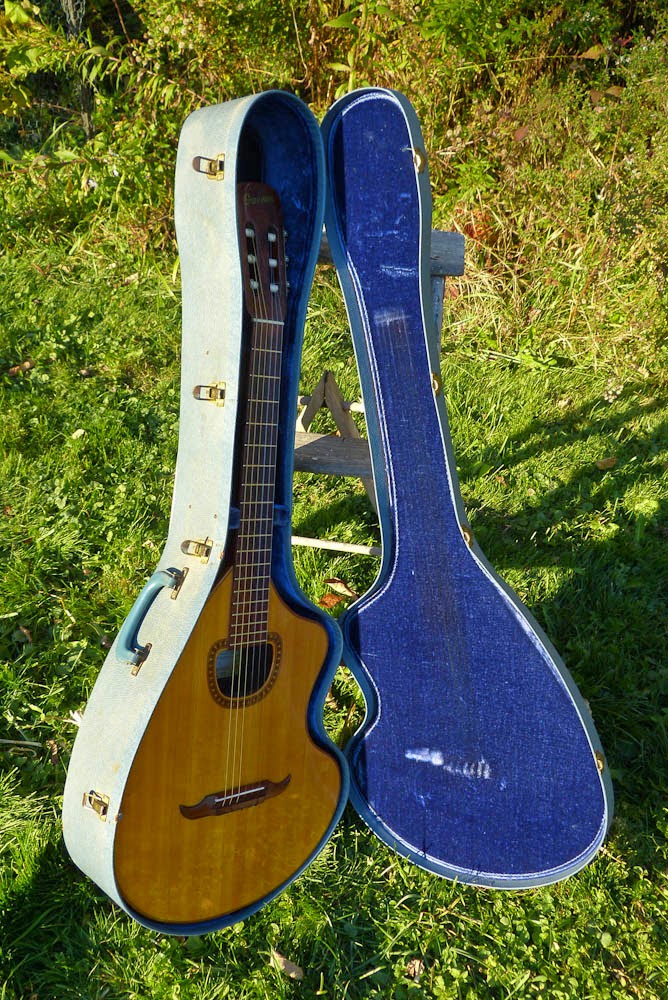c.1970 Giannini Craviola Classical Guitar
This is a customer's guitar that was in for a bit of work. It's one of the Craviola model Gianninis (made in Brazil) and is dated via the label at 1970. This one is in pretty great shape which is mostly due, I'd imagine, to its long storage in an original chip case. The odd body shape means it sits perfectly on the knee and despite a 15 1/4" lower bout the playing comfort means it handles more like an 00-size instrument.
My work included a fret level/dress, new bone saddle and small bridge work (see pic a bit below), K&K pickup install, and setup.
Not only does the guitar look great but it also has a nice feel and it has a good, full sound. The top is lightly fan-braced and the soundhole placement and size means that the main ladder brace above the fan struts is higher up on the board than average. Combine that with the large surface area of the bass side of the top and you can see why this has a big bottom end.
Unfortunately (or fortunately?) the entire guitar is laminate, though the top seems to be 1/32" thickness spruce laminated to 2x 1/64" ply layers. This is far better for tone than the Japanese imports from around the same time that did the laminate layers in a reversed fashion and the "spruce" for the top was merely decorative. When you get it to 1/32" thickness like on this guy it at least imparts a bit more tonal character and perhaps may open up slightly more over time. At least... that's what my ears hear when I compare older guitars made with different lam.
Rosewood headstock veneer, rosewood board, rosewood bridge... and rosewood back and sides! The (original) nut is bone.
I love the vaguely-Gypsy cut of the soundhole.
The thing about this bridge...
...is that it had a hairline crack running from its saddle slot down. The culprit was a poorly-installed undersaddle pickup (top-mounted, curiously enough) that had been wedged in the slot too tightly. Here's a quick way to deal with that crack: inject it and clamp it up! Fortunately there was enough integrity for me to consider this a good way of attacking the crack. If it had been entirely through (and split off from the front of the bridge) I would've probably just put on a new bridge.
Well, we all like "pretty."
I would like to see an octave mandolin or mandocello use this shape...! My biggest complaint with said instruments is often their lack of bass and awkward handling... which would be solved, here.
An original semi-rigid powder-blue chip case is just what the Dr. ordered...

















Comments